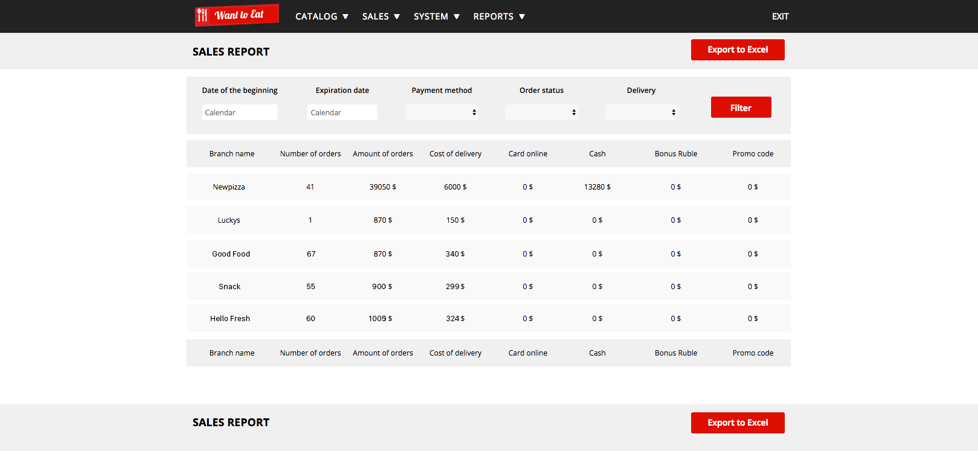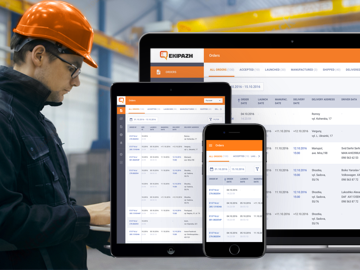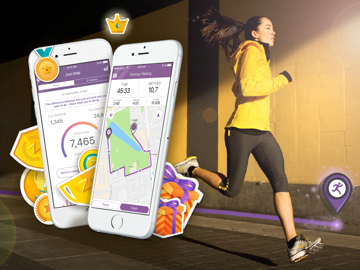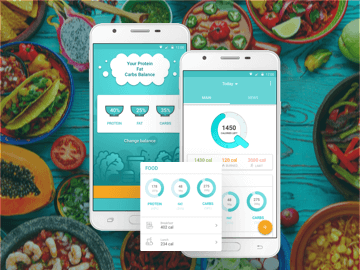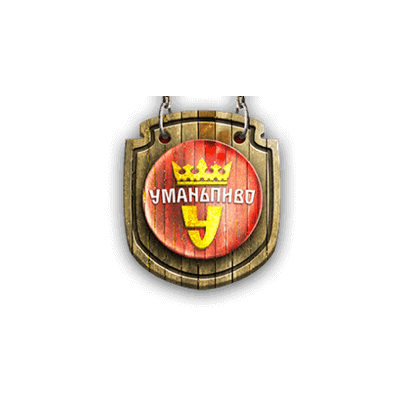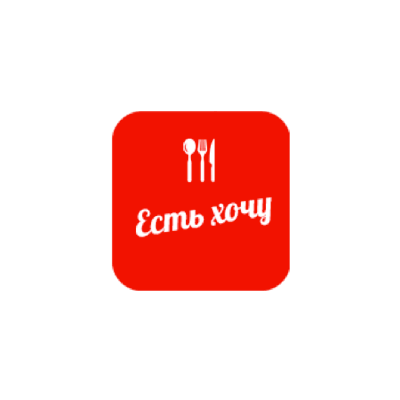Want to eat is an aggregator of ready-made meals delivery with a convenient search of dishes and restaurants.
The project includes a website for choosing and ordering meals, a client’s office with the ability to trace the order, as well as an administrative section for moderators and partner restaurants.
Analogues: UberEATS, Foodora, Foodpanda, Postmates, Zomato.
Interview with users
The first stage is a study of the specific features of the project.
- We receive a completed design brief from the ordering client.
- We conduct an additional interview specifying the details.
- We define the target audience of the project.
- We study the solutions of our competitors.
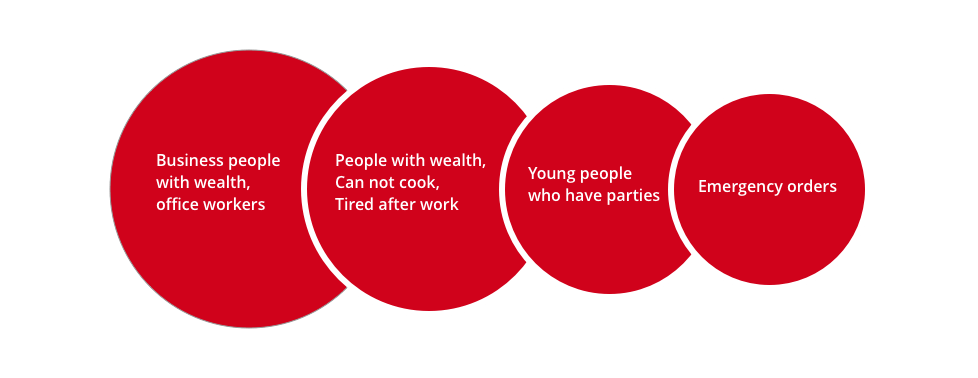
We conduct testing of the existing services for convenience, finding out their strong and weak points. We think over the competitive positions of our project. We study the similar projects and applications for food delivery.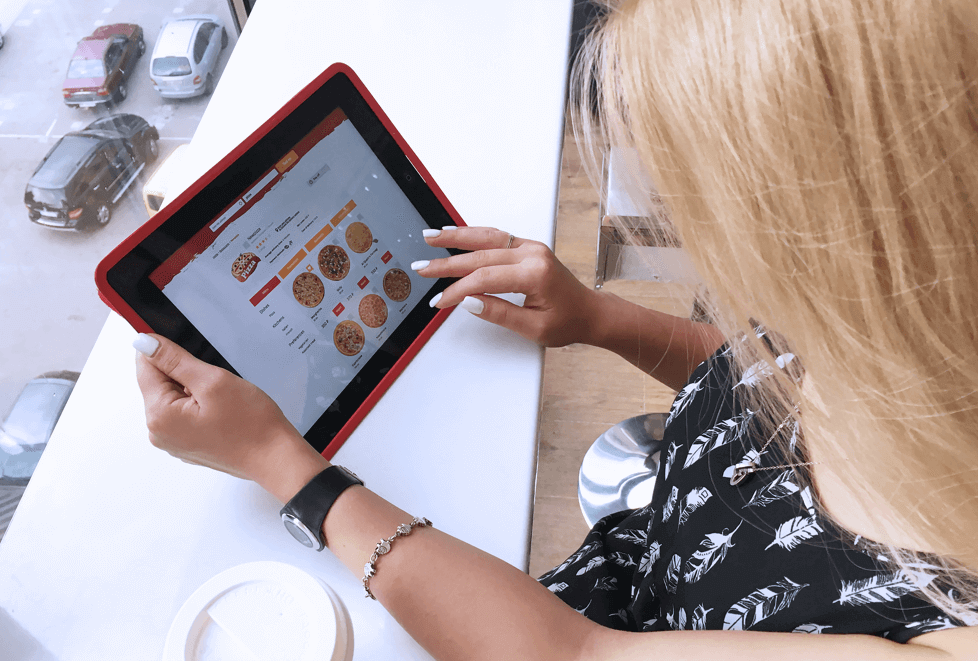
Catalogue structure
Expert structure of the catalogue solves two issues:
Convenient choice of restaurants and food.
Website promotion in the search engines.
We have put together the semantic kernel of the website. We have developed the catalogue structure which can collect more traffic from the search engines. A similar strategy has been implemented in Wi-Fi Space project due to which the project now has hundreds of thousands of visitors a month.
Google believes that on a “Thai cuisine” request, it’s more relevant to show a page with specific Thai dishes than a general page with dishes of different cuisines. For this purpose the website should have a separate page expressly with the Thai cuisine. The page shall have metadata and be optimized for the related requests. For example, “New-York Thai food”, “Thai food delivery” etc.
There are thousands of possible search requests.
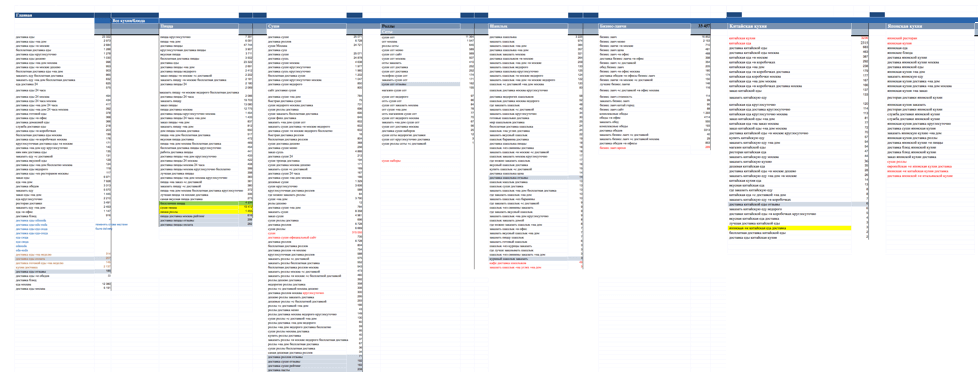
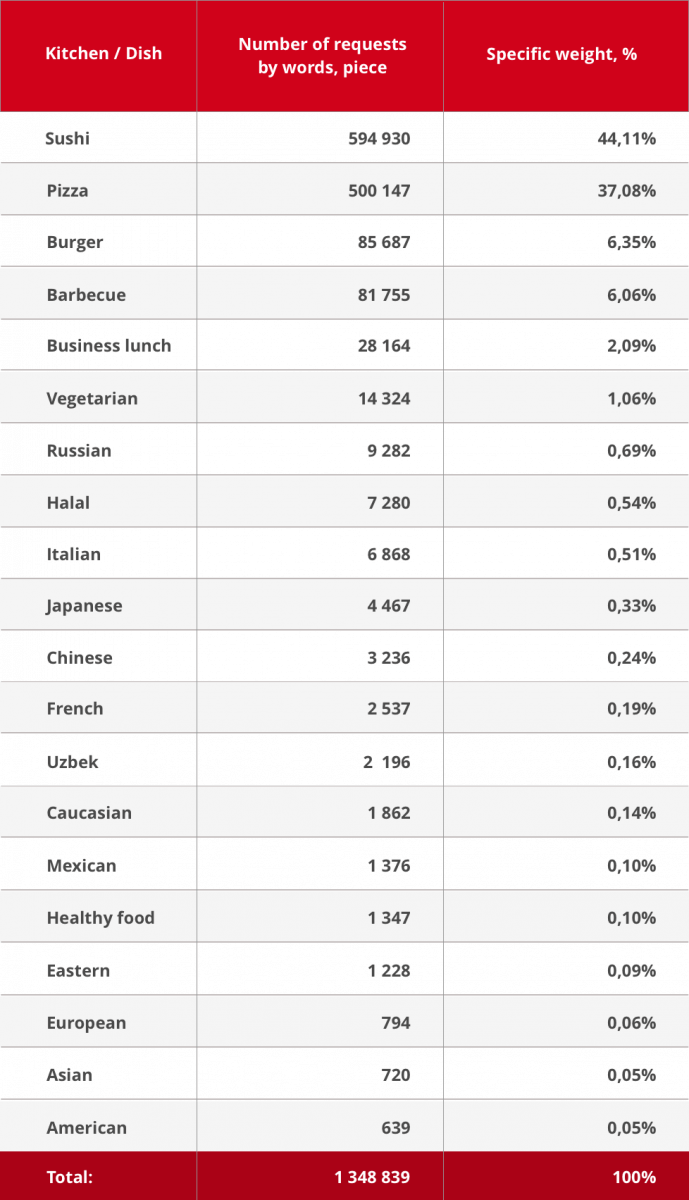
UX
We build up the project structure and interactive prototype. It helps to work thoroughly on the main scripts.
At the same time it’s necessary to provide a convenient and familiar interface for viewing the website from big screens.
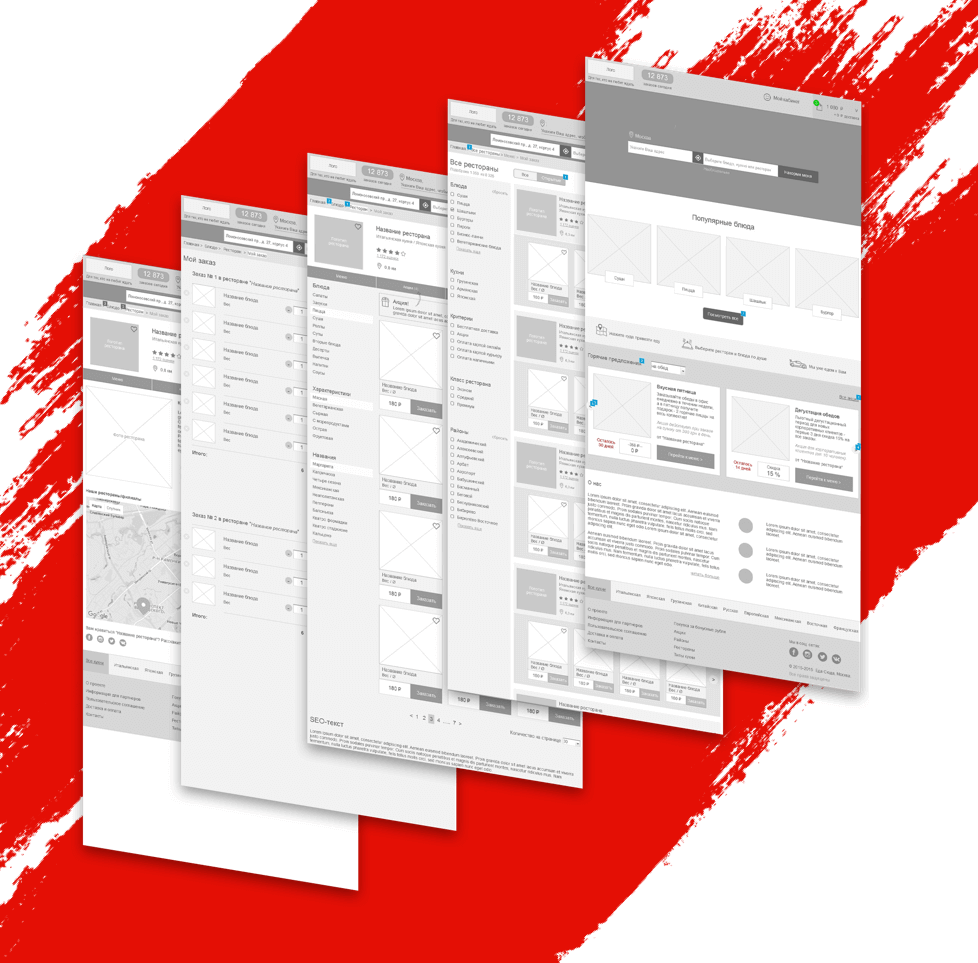
We draw all the screens
The next step – interfaces are created and designed.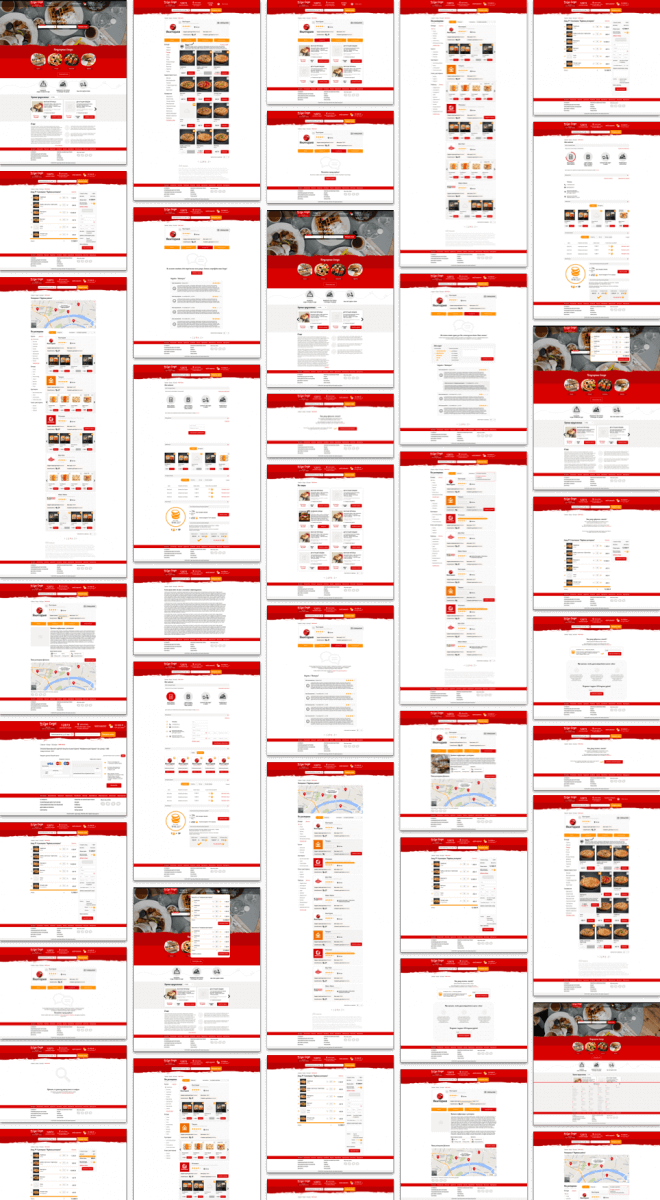
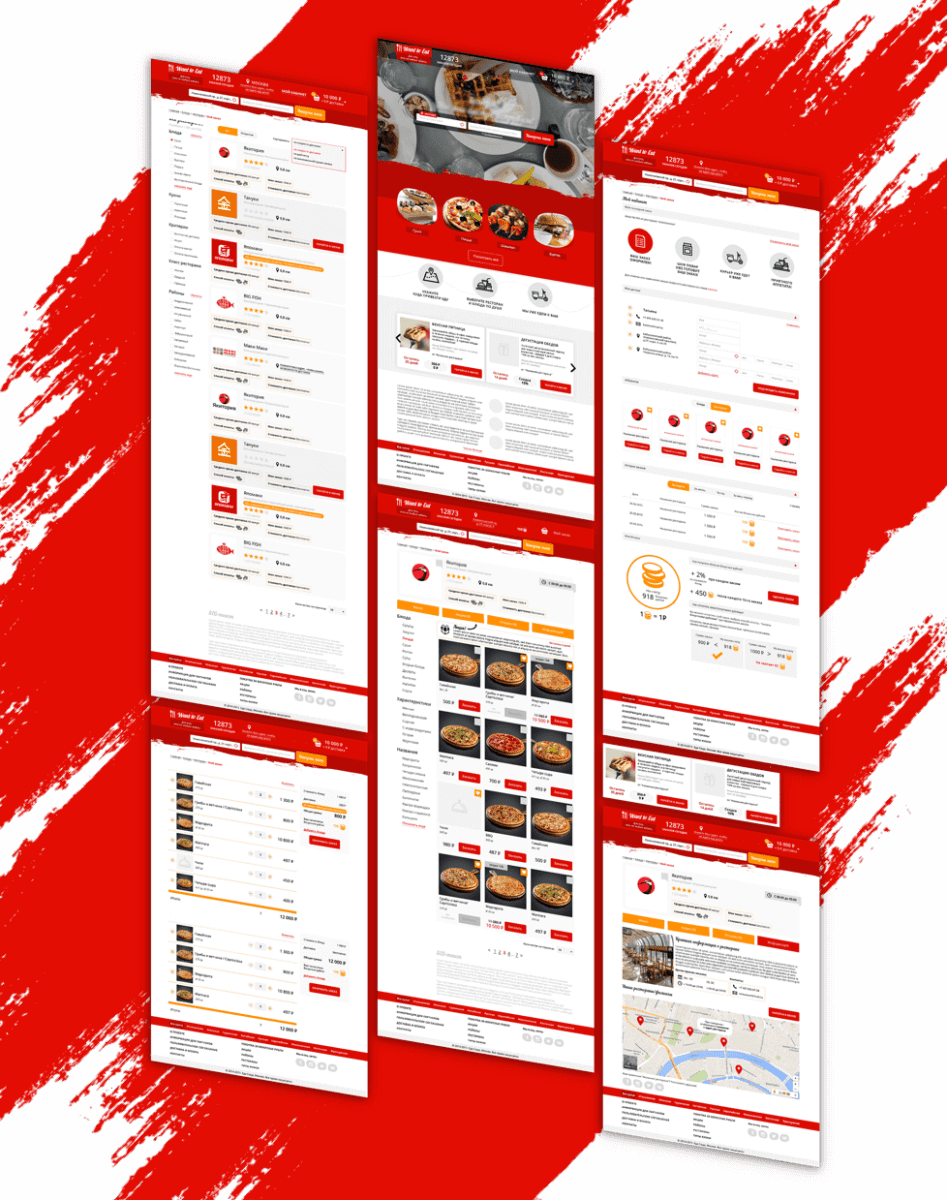
Search
There is one important element – a convenient and fast search of the dish or the restaurant. If a catalogue is designed for a measured step-by-step selection, then the search allows to make the order faster.
It can be the name of a restaurant (for example, “Hare’s leg”), the cuisine (for example, “Thai cuisine”) or the dish (for example, “pizza Margherita”).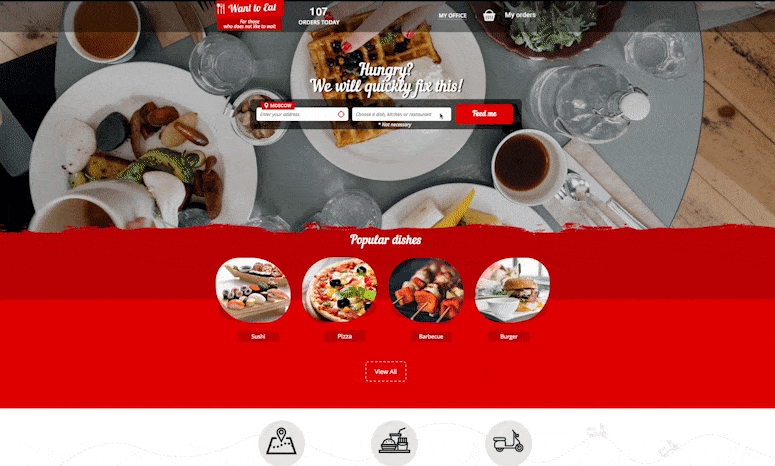
Fast order
After placing an order at the website, the partner restaurant receives a notification about it. The restaurant worker confirms or cancels the received order.
The customer can monitor the status of the order in real-time mode: confirmation from the restaurant, meal dispatch by the delivery guy, delivery time etc.
Payment
For the customers there is a choice of a convenient choice of payment: by a bank card (when ordering or to the delivery guy), in cash to the delivery guy, by bonuses.
For the partners we offer a fast and simple connection to the payments, where there is a setting of the payment types.
Mobile First
The website is adapted to mobile devices. The design shows all the statuses of the screens and elements developed. Creation of the app hasn’t been planned within the first stage, that’s why adaptation is an essential factor in design development.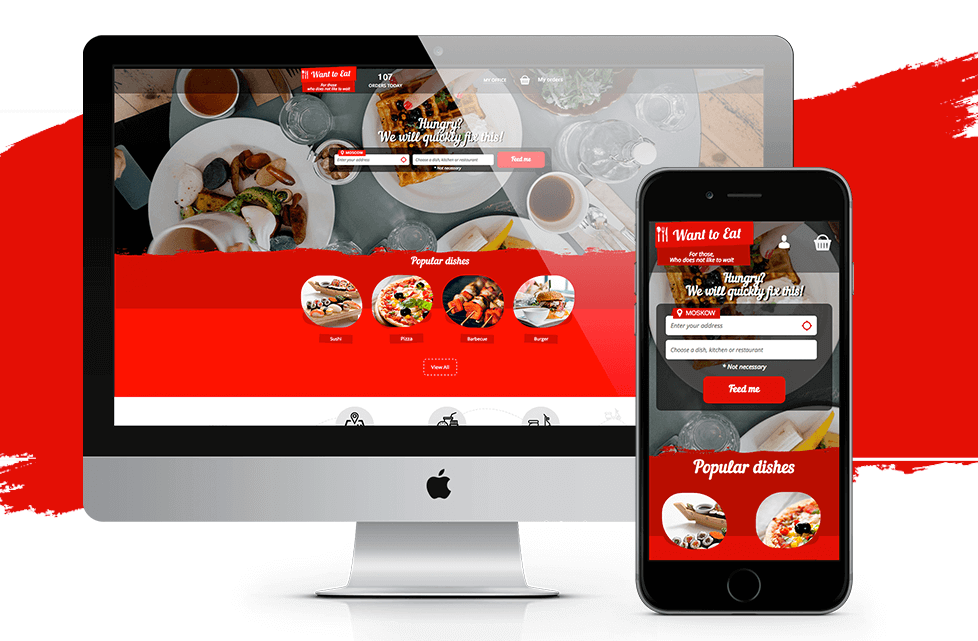
Control panel – on-board computer
For the success of the food delivery service both satisfied customers and satisfied partners (restaurants) are important.
There aren’t really many good restaurants, so it’s important to provide them with a convenient tool to work and show the benefits of working with the aggregator. The control panel of the partner restaurant has been made user-friendly and intuitively operated.
Two types of roles with different access levels have been created:
- Owner (Director) of the restaurant gets access to the financial statements, statistics of order processing, to all the functions related to the current work: managing of the bonuses, prices, menus, current orders and others.
- The restaurant staff get limited access: menu update, and work with current orders. Accessibility for the staff can be set by the Director.
The synchronization ensures timely receipt of the notifications and all the information about the order.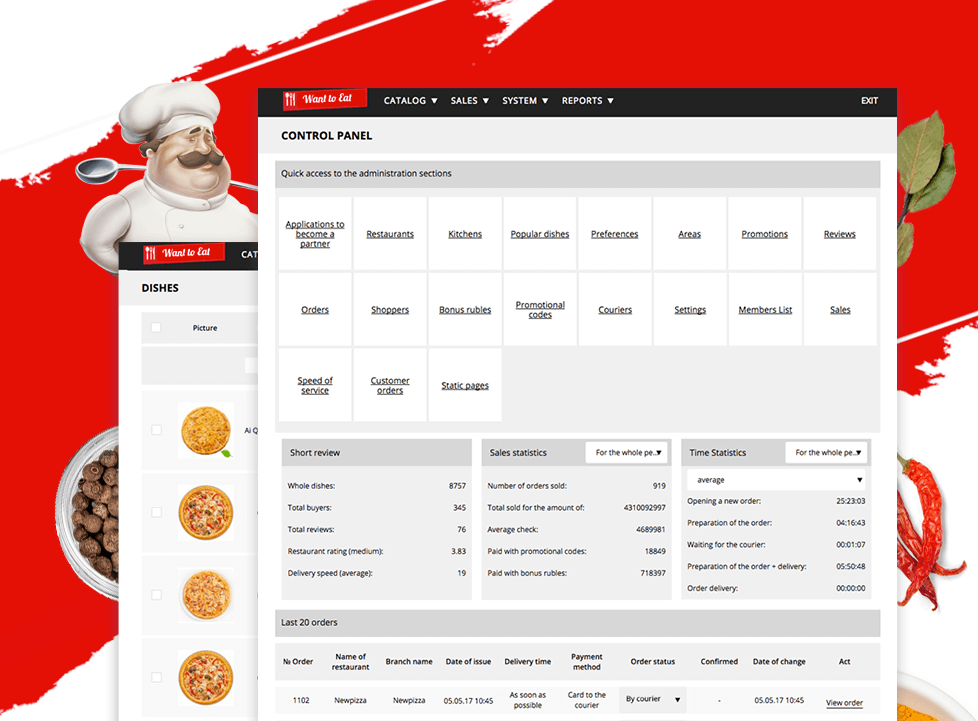
Ordering administration
The restaurant finds a required order, gets necessary information, delivers food to the customer, monitors the quality of the delivery guys’ work.
The project has been calculated for heavy workloads. Steady flow of the orders, payments, monitoring of the order statuses, work within the system of the restaurant staff – all this demands high speed of processing of huge volumes of data at each moment.
We have paid attention to the data synchronization and fast data exchange.
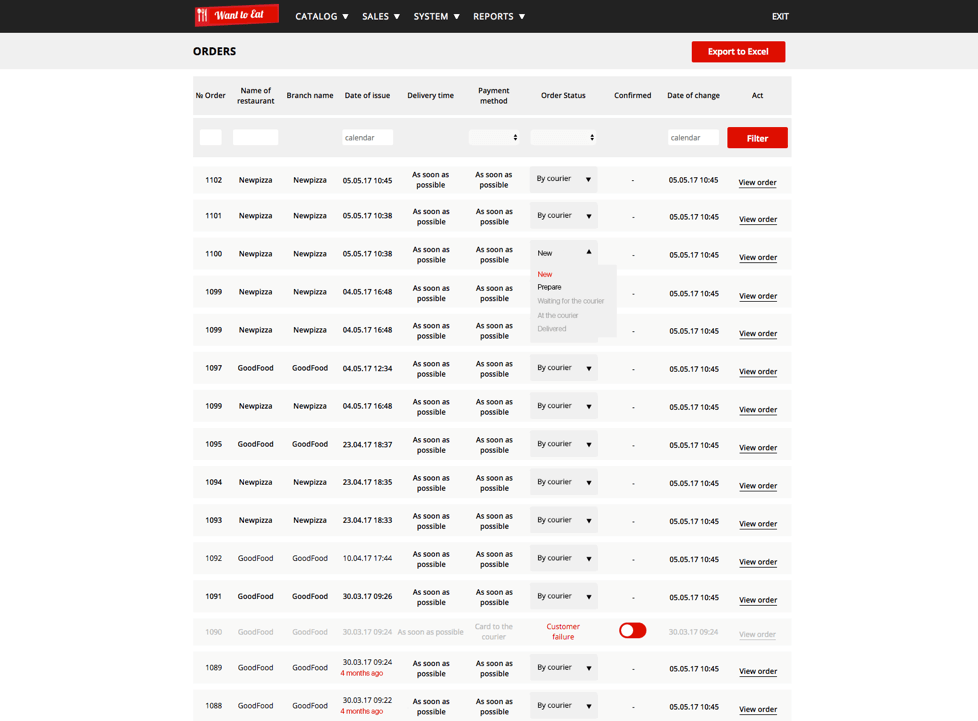
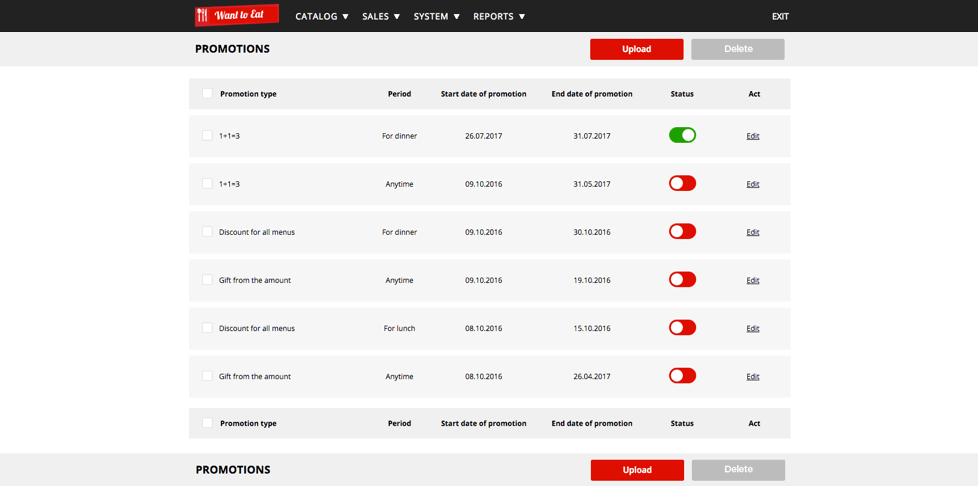
In the admin panel the restaurant representative can do the following:
- look through the statistics of the sales and orders
- set the system of bonuses
- control the speed of servicing of the ordering clients
- work with delivery guys.
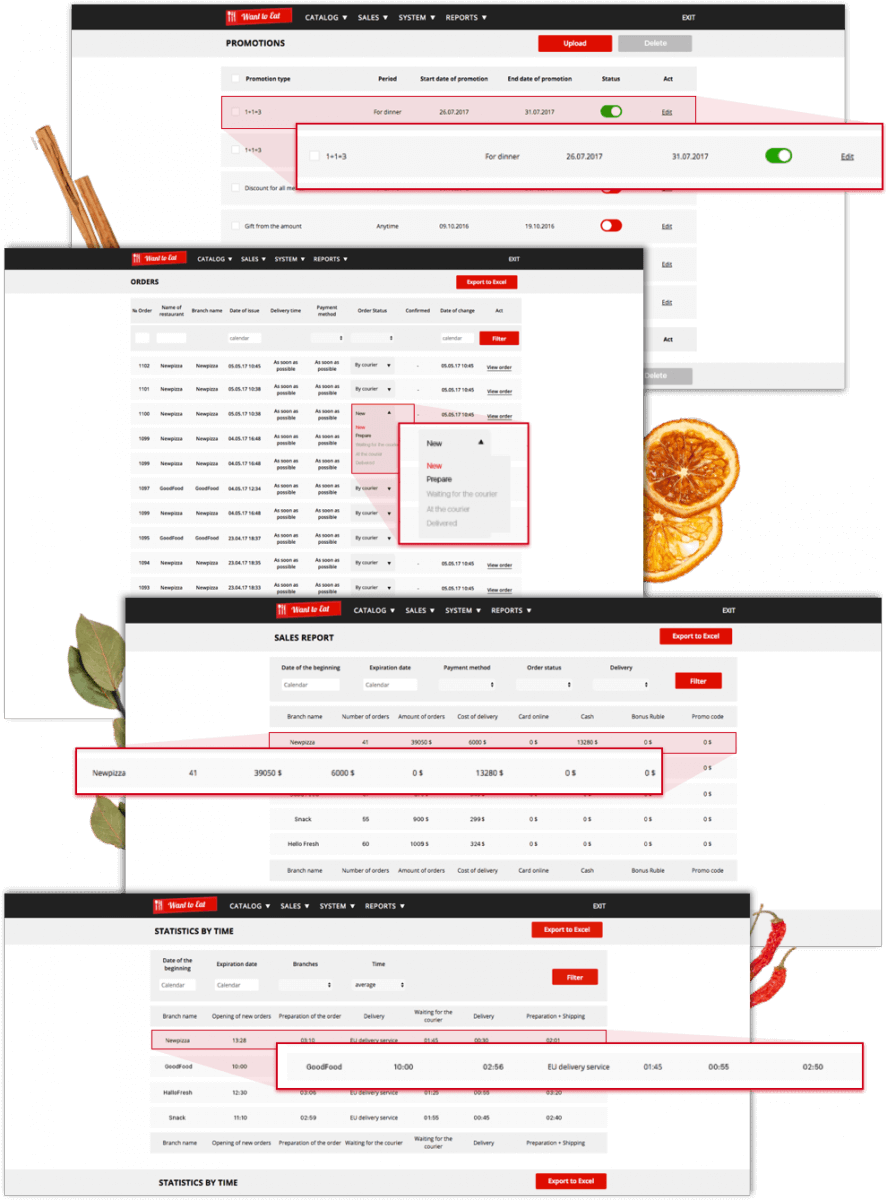
Programming
- Synchronization (swift data exchange) under conditions of processing huge volumes of information and substantial number of users. A special approach to the structure of data in the server part has been required, as well as the algorithm development for fast work with huge volumes of information including the graphics.
- Notification system for the restaurants and customers.
- Ability for communication between users in the frame of the service for specifying the order, address, and other information.
- Rights and access levels for the users: service owner, service moderators (inclusive of the servicing area), panel for the restaurants with their roles (director, staff), client’s office.
- Order payment: connection of the fast payment by card.
- Attraction of the users and increase in their loyalty: system of bonuses, promotional actions from the restaurants, integration with social media.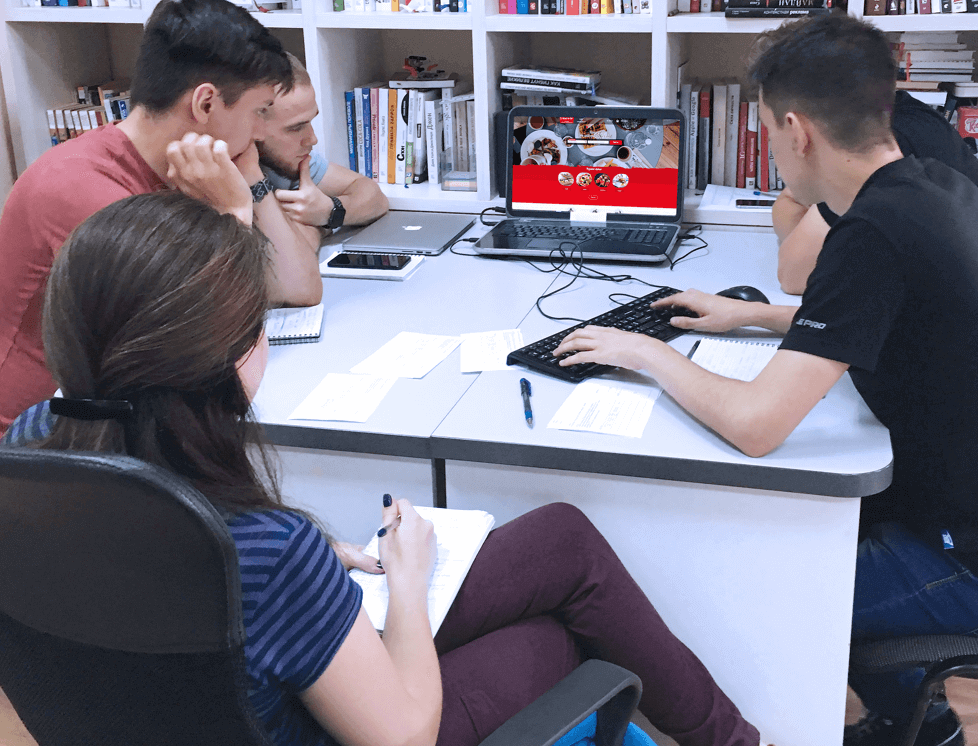
The development has been performed on the basis of the SCRUM methodology. A testing engineer has taken part in the Sprint, that’s why the prerequisite check of the functional blocks has been conducted after their completion.